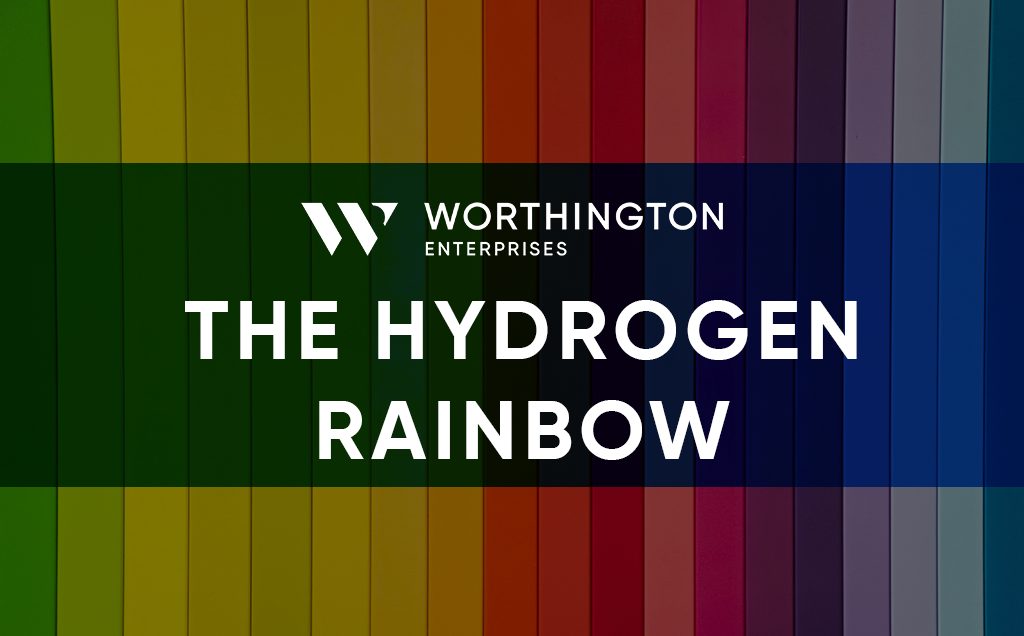Hydrogen is playing a central role in the energy transition. But all hydrogen sources are not created equally – some production methods have a larger environmental footprint than others. Nevertheless, as industry and transportation begin to rely on hydrogen more and more, availability of hydrogen is more critical to scaling up than green generation. In this early phase of hydrogen’s career as a mainstream fuel source, decision makers need to use entire spectrum, so that technology development continues at its currently brisk pace. Each color is a positive step forward in establishing a sustainable energy landscape.
What colors does hydrogen come in?
Hydrogen gas itself is colorless and odorless in its natural state. When hydrogen is burned, it produces a pale blue flame, but the gas itself remains colorless.
Why was hydrogen given so many colorful terms?
The colors constitute a system for evaluating hydrogen. Green and the colors near it have the purest means of production and are deemed most desirable. The further away from green the less desirable from a clean energy viewpoint.
Green Hydrogen: A Breath of Fresh Air
Green hydrogen is created using clean electricity from renewable sources like solar or wind power. A special process called electrolysis is used, which splits water into hydrogen and oxygen without producing any pollution.
At the moment, green hydrogen is rare because it costs the most to produce. However, as costs of wind and solar power have become lower, green hydrogen will also become cheaper as production scales up.
Yellow Hydrogen: Harvesting Sunshine
Next to green on the color wheel is yellow, and some experts are using the term to distinguish hydrogen generated using solar power from other renewable energy sources.
Blue Hydrogen: Striking a Balance
Blue hydrogen is primarily produced from natural gas using steam reforming, creating hydrogen and carbon dioxide as a by-product. The term “low-carbon hydrogen” is used for blue hydrogen because, while it doesn’t eliminate greenhouse gas creation during production, it incorporates carbon capture and storage (CCS) to reduce its environmental impact.
Pink Hydrogen: The Nuclear Glow
Pink hydrogen comes about when H2 is produced using electrolysis powered by nuclear energy. Occasionally, this method of production is also called purple or red hydrogen.
Grey Hydrogen: The Current Mainstream
At present, the most widely used method for making hydrogen is grey hydrogen production. Grey hydrogen is formed by processing natural gas, or methane, through steam methane reformation, but it doesn’t capture the greenhouse gases produced during this process. Essentially, grey hydrogen is similar to blue hydrogen but lacks the application of carbon capture and storage.
Black and Brown Hydrogen: Fossil Fuel Hues
By employing black coal or lignite (brown coal) in the hydrogen production process, both black and brown hydrogen represent the opposite end of the environmental spectrum compared to green hydrogen. To complicate matters, hydrogen derived from fossil fuels through the gasification process is sometimes referred to as black or brown hydrogen interchangeably.
Turquoise Hydrogen: A Potential Gem
Turquoise hydrogen is produced by splitting methane through pyrolysis, generating hydrogen and solid carbon. Although currently not prominent, it may become a low-emission option if powered by renewables and with proper carbon management in the future.
White Hydrogen: Underground Mysteries
White hydrogen is a kind of hydrogen that occurs naturally in underground deposits and is formed through a process called fracking. Currently, there are no plans to use this hydrogen.
About Worthington
Worthington Enterprises Europe is the largest designer and manufacturer of pressure vessels in the region with over 1,600 employees working at facilities in Austria, Poland and Portugal. Worthington is the first in its industry to incorporate sustainable practices into its long-term business strategy.
With the lightest composite and steel low- and high-pressure cylinders available, Worthington designs and makes solutions for technical gases, industrial gases, and alternative fuels. The Company invests strategically in production facilities that serve the sustainable mobility market with gas-storage, transport and onboard fueling systems for cars, buses, trucks and more.
Worthington Enterprises (NYSE: WOR) is a designer and manufacturer of market-leading brands that help enable people to live safer, healthier and more expressive lives. Worthington Enterprises operates with three segments: Building Products, Consumer Products and Sustainable Energy Solutions. Worthington’s emphasis on innovation and transformation extends to building products including water systems, heating and cooling solutions, architectural and acoustical grid ceilings and metal framing and accessories, and consumer products in tools, outdoor living and celebrations categories sold under brand names Coleman®, Bernzomatic®, Balloon Time®, Level5 Tools®, Mag Torch®, Well-X-Trol®, General®, Garden-Weasel®, Pactool International® and Hawkeye™. Worthington Enterprises also serves the growing global hydrogen ecosystem through on-board fueling systems and gas containment solutions.
Founded in 1955 as Worthington Industries, Worthington Enterprises follows a people-first Philosophy with earning money for its shareholders as its first corporate goal. Worthington Enterprises achieves this outcome by empowering its employees to innovate, thrive and grow with leading brands in attractive markets that improve everyday life. Headquartered in Columbus, Ohio, Worthington Enterprises employs approximately 5,000 people throughout North America and Europe. Worthington Enterprises engages deeply with local communities where it has operations through volunteer efforts and The Worthington Companies Foundation, participates actively in workforce development programs and reports annually on its corporate citizenship and sustainability efforts. For more information, visit worthingtonenterprises.com.


